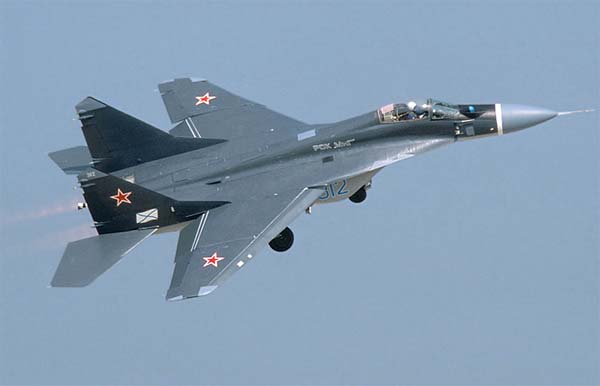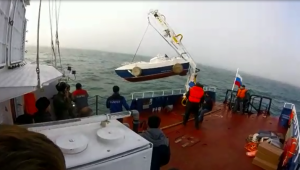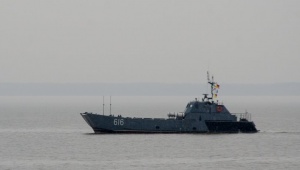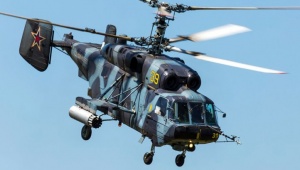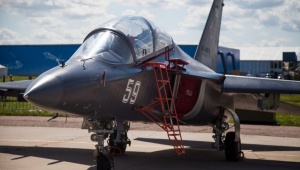Russian Warplane Crashed into Med Sea: What’s Next?
Russian deck-based jet MiG-29K fell into the Mediterranean Sea off Syrian coast has become the third accident happened to the air wing of Admiral Kuznetsov carrier. Luckily, the pilot managed to eject and nothing threatens his life, but the future of the sunken warplane is still dim. Based on previous precedents, Mil.Today tried to forecast what Russian Navy may do next regarding the lost fighter jet.
The first airplane accident with Admiral Kuznetsov happened on October 18, 2004 and was relatively minor. It was just a hard touchdown of the trainer Su-25UTG: it had the right gear leg broken and 90-meter long dragging. The pilot escaped unharmed, but the airplane and the deck refractory coating were damaged.
The second episode occurred in the North Atlantic on September 5, 2005 and was far more serious: the arresting wire tore when the Su-33 fighter was landing, so the jet passed the deck unstopped and fell into the sea. The media then actively discussed the airplane future: either lifting from the seabed or explosion by depth bombs, as there allegedly was secret equipment onboard the warplane, including the ‘friend-or-foe’ identification system. Finally, however, the navy bosses found both options unreasonable, since 1,100-meter depth made the chances of success impossible.
The recent incident happened to MiG-29K in the Mediterranean in some way resembles that tragedy of Su-33, because the depth of Admiral Kuznetsov’s deployment zone varies from 1 to 1.5 km. The Russian Navy has not announced the future steps regarding the sunken jet so far.
To lift the plane, Russia needs special vessels and deep-sea equipment. Currently, the Black Sea Fleet’s KIL-158 lifting-and-mooring ship regularly shuttles between Sevastopol and Syrian Tartous delivering various cargos for Russian military. This vessel is designed for putting and lifting net boom protections at the depths down to 300 meters. Besides, she may carry a submersible to rescue crews of wrecked submarines. So, KIL-158 would unlikely be helpful in lifting of the MiG-29K airplane from the 1-km depth.
Destruction of the jet by depth bombs is doubtful as well. In the similar situation with the Su-33 sunken in the Atlantic in 2005, one of the top naval officials said the following: "Even if the plane is found, it would be difficult to destroy it. Precise shooting of depth charges by rocket launchers is unreal. Bringing minesweepers and 'combing' the bottom with bombs is expensive, time-consuming and does not ensure the result".
One question remains open: to what extent the "catch" of damaged but operable Russian MiG-29K may be valuable to foreign military experts? Here is the list of standard avionics: radar system Zhuk capable to track up to ten air targets and to provide simultaneous missile fire at four of them; additional navigation system Uzel; automatic monitoring and registration system Karat. Besides, the fighter’s engine RD33MK may be of interest as well. This powerplant is based on the 33rd series of engines for MiG-29SE and MiG-29SMT fighters. Dubbed "Sea Wasp", the naval modification features improved afterburning thrust (9,000 kgf comparing to 8,300 kgf of previous versions) and service life extended from 2,000 to 4,000 hours. Besides, the upgraded engine is more reliable in warm marine climate.
History shows that American military experts may go for the most unexpected things to learn technology achievements of the "most probable adversary" better. In 1974, they held an operation codenamed "Azorian" and used purpose-built ship Hughes Glomar Explorer to lift a part of Soviet diesel electric submarine K-129 sunken in 1968 in the North Pacific from the depth over 5 km. The Americans were mostly interested in codebooks and ballistic missiles. However, they allegedly managed to get only two nuclear-headed torpedoes and some other intelligence-valuable things.














